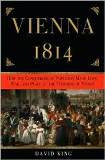King's Road was, at its height, a vibrant urban catwalk that showcased everything from the fashionable to the freaky, the bohemian to the punk. The Rolling Stones had their first rehearsal at No. 500, where Bill Wyman auditioned as the band's bass player; at No. 430, Johnny Lydon would join the Sex Pistols. Eric Clapton lived briefly at No. 152, often jamming at the Six Bells (No. 197). Many other artists lived here for a time from Bob Marley to Joe Strummer. It was here that Peter Sellers faked an injury to avoid playing Major T. J. "King" Kong in Dr. Strangelove, and the Rocky Horror Show, after opening in the Royal Court Theatre Upstairs, moved to the Classic Cinema at No. 148.
King's Road boutiques, meanwhile, dressed the stars and their creations from Sgt Pepper to Major Tom. Another icon, no surprise, would be closely associated with the scene: James Bond, who, as Ian Fleming imagined it, lived in a trendy unnamed square just off King's Road. By the 1980s, however, this legendary thoroughfare had lost its edge, degenerating into what many critics summed up as just another bland high street and tame tourist trap. The Chelsea Drug Store at 49 King's Road had become a McDonald's.
This blog is named in honor of a street that for a time symbolized innovation, nonconformity, and youthful exuberance - with the hope that none of these forces disappear anytime soon from the world of creativity.
As for books on this mythic patch of pavement, I recommend Max Décharné's King's Road: The Rise and Fall of the Hippest Street in the World. Décharné also sings for the garage punk band The Flaming Stars.
skip to main |
skip to sidebar
An Eclectic Blend of History, Pop Culture and the World of Writing
About Me
- David King
- My books have been selected by the Book-of-the-Month Club, the History Book Club, and the Military Book Club, and translated into several languages, including most recently Chinese, Polish, Korean, and Russian. Before becoming a writer, I lived in Europe for six years and taught European history for several more at the University of Kentucky.
My Books
Most Popular Posts
Top Five Rudbeckia
Top Five Napoleonica
Napoleonic Links (Under Construction)
- Alex Mikaberidze Napoleonic Review
- Anne S.K. Brown Military Collection, Brown University Library
- Club Austerlitz
- Editions de la Revue Napoléon
- Fondation Napoléon
- Fortiter
- Institut Napoléon
- Institute on Napoleon and the French Revolution
- International Napoleonic Society
- J. David Markham Napoleonic History
- Juan Cole Napoleon's Egypt
- Les Amis de Talleyrand
- Les Médaillés de Sainte-Hélène
- Liberty, Equality, Fraternity
- Literature on the Age of Napoleon
- Musée de l'Armée
- Musée de la Maison Bonaparte
- Musée du Château de Malmaison
- Musée et Domaine nationaux du Château de Fontainebleau
- Musée Fesch Ajaccio
- Musée national de la Légion d'honneur
- Napoleon 1er
- Napoleon Bonaparte Internet Guide
- Napoleon Series
- Napoleonic Guide
- Napoleonic Historical Society
- Napoleonic Medals
- Napoleonic Wars Maps (United States Military Academy at West Point)
- Napoleonica
- Peter M. Holmes Fine Books
- Revue des études napoléoniennes (Gallica)
- Souvenir Napoléonien
- Souvenir Napoléonien de Monaco
- The Congress of Vienna (coming soon)
- Vienna 1814
- Waterloo Battlefield
- Waterloo Battlefield Tours
- Waterloo Campaign, Connoisseur’s Waterloo, Peninsular War 200th Anniversary, and Other Tours Ian Fletcher Battlefield Tours
Blogs and Other Resources (Under Construction)
- A Different Stripe
- AHA Blog
- American Historical Review
- Arts & Letters Daily
- Boing Boing
- Bookgasm
- Bookreporter
- Buzz, Balls, & Hype
- Critical Mass
- Det perfekta tomrummet
- Early Modern Notes
- Ed McClanahan
- Finding Atlantis
- Freakonomics
- H-France History
- HNN
- Kentucky Literary News
- Old Friends: Kentucky Facility Retired Thoroughbreds
- Paper Cuts
- Paul Collins
- Peter Englund
- PhiloBiblos
- Proceedings of the Athanasius Kircher Society
- Publishers Lunch
- Publishers Weekly
- Random House
- Renaissance Weblog
- rogueclassicism
- Short Stack
- Simple Grace
- Society for Military History
- Steamboats Are Ruining Everything

